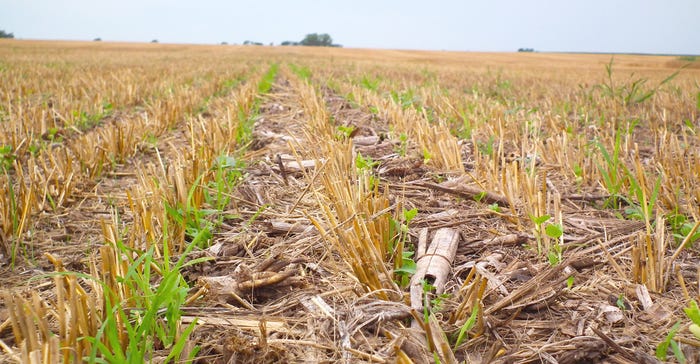December 27, 2017

No-till and crop rotations helped central South Dakota corn growers push through drought.
By Lynn Betts
Scott Kolousek thought he’d have a total crop failure, but his corn crop in Jerauld County, S.D., did exceptionally well.
Dan Forgey didn’t expect much for yields either, but ended up with above-average yields on his Potter County, S.D., fields.
The same was true for Kevin Deiter in Faulk County, S.D.
What the three farmers had in common, besides farming in the midst of a drought last year, was their use of cropping systems that incorporated no-till and crop rotations. Those two management practices, along with cover crops, were credited by a number of farmers with giving their soil the resilience to not only survive the drought, but to produce decent crop yields.
“I doubt we would have had any chance for a decent crop without no-till this year,” says Deiter, who has no-tilled for more than 25 years. “A good crop rotation helps in a dry year, along with no-till that doesn’t open up your soil.”
Forgey says it was his healthy soils that made the difference in a dry summer. “Cover crops, diversified rotations, integrating livestock and 24 years of no-till all played a part,” he says.
Kolousek is convinced a small grain in his rotation and the use of cover crops and no-till to keep the ground covered helped him catch more moisture last year.
No-till No. 1
No-till is now the leading cropping system in South Dakota, according to Jeff Zimprich, Natural Resources Conservation Service state conservationist.
In the most recent NRCS inventory, information was gathered from more than 26,000 fields across the state in the fall of 2016 and spring of 2017. It showed that no-till systems are being used on more than 6 million acres.
“That’s 45% of cropland fields in the state,” Zimprich says. “No-till outpaced the system with the second-highest acreage, mulch till, by a two-to-one margin, and was nearly triple the acreage of conventionally tilled fields.”
The greatest use of no-till continues to be in the band of counties through the central part of the state, where 14 have three-quarters or more of the cropland under no-till cropping systems.
“This area has the greatest diversity of crops, too,” Zimprich says. “That was important in the drought because the armor and undisturbed soil of a no-till system, along with crop rotations and cover crops, offered the most resilience in what was a very dry year.”
Lee Kopriva, a Clark County, S.D., livestock and grain producer who uses no-till, cover crops and crop rotations, agrees. “As we’re working through drought years, it becomes more important to hold onto every bit of moisture you can. When you see water pooling in fields and running off fields, you’ve lost the opportunity to use that water. In our area, water is the most limiting factor. These practices absorb it and keep it for use by the crop.”
Betts writes for South Dakota NRCS
You May Also Like




